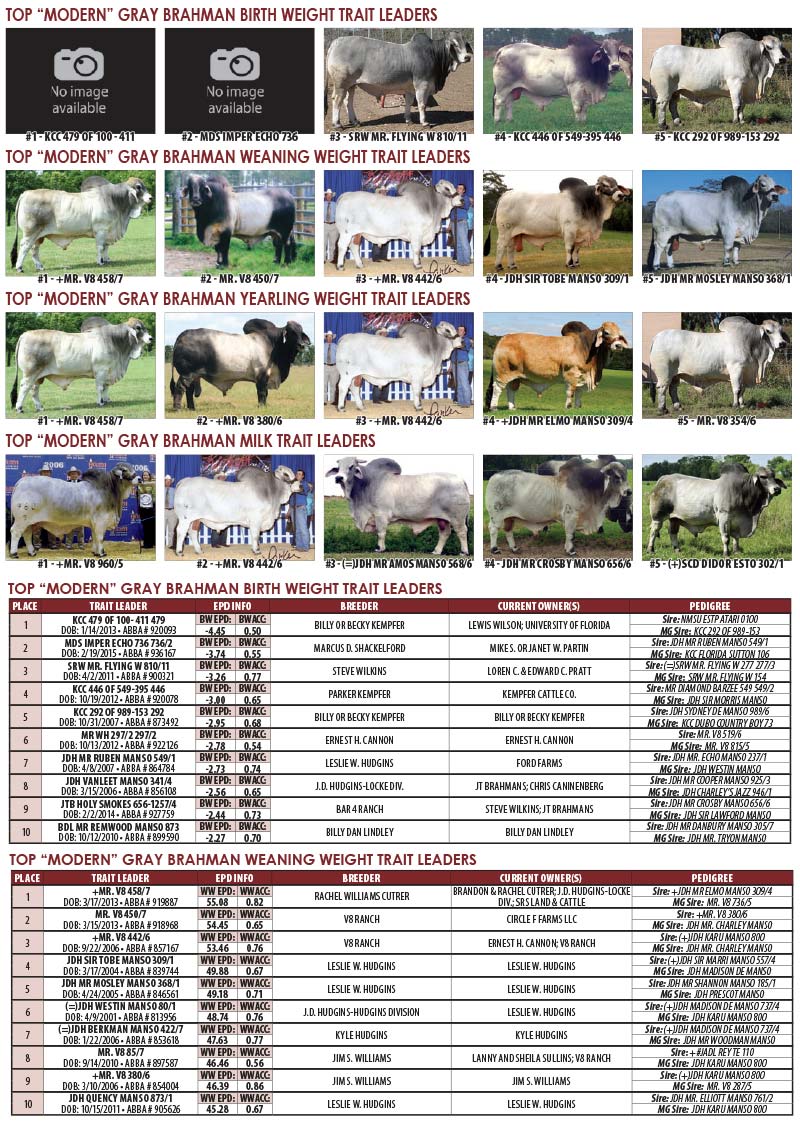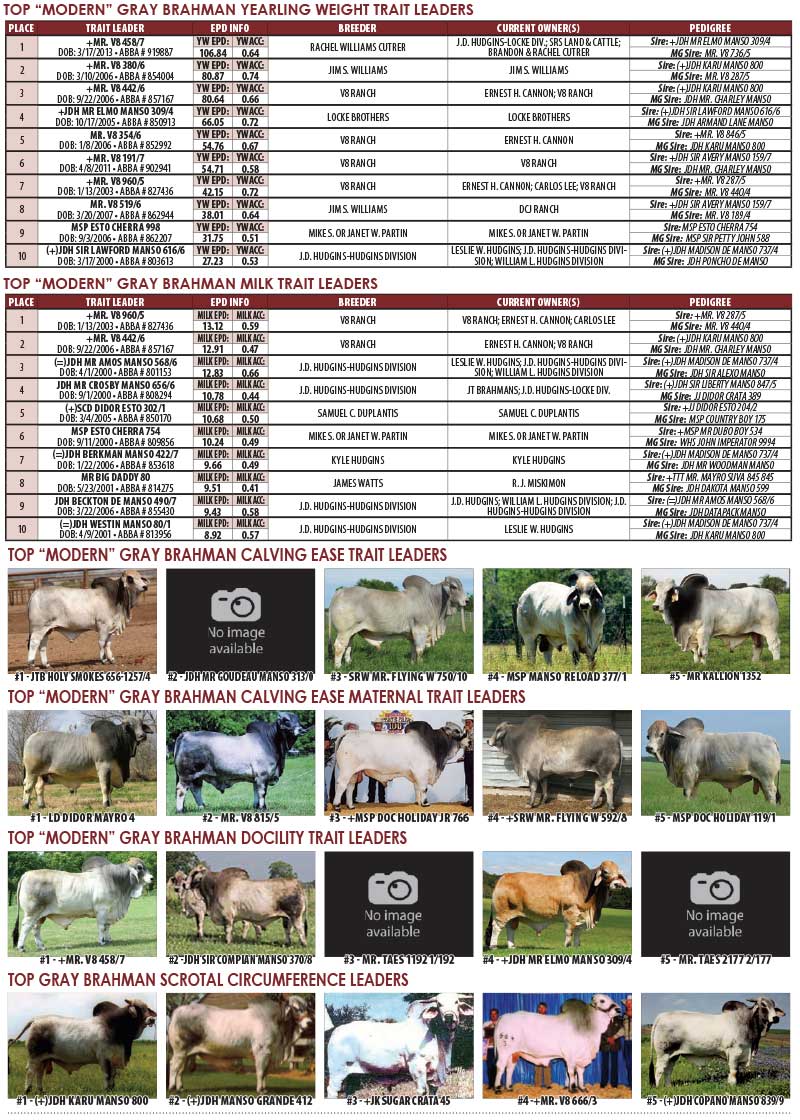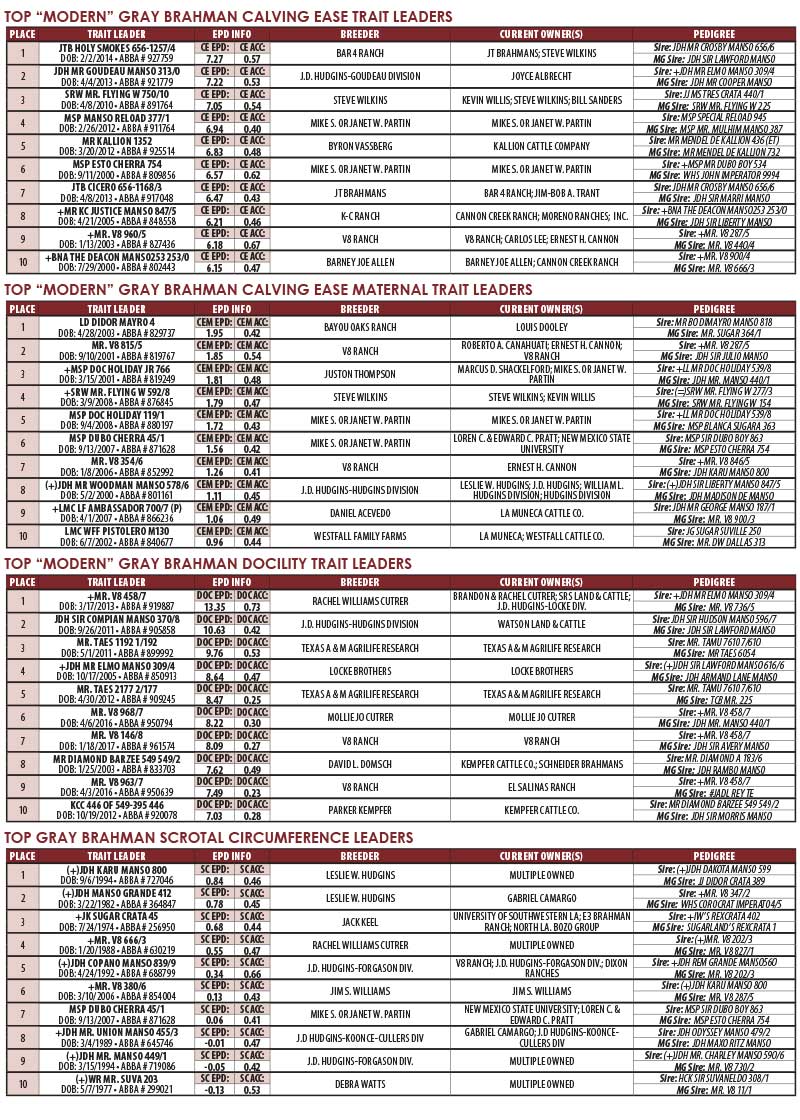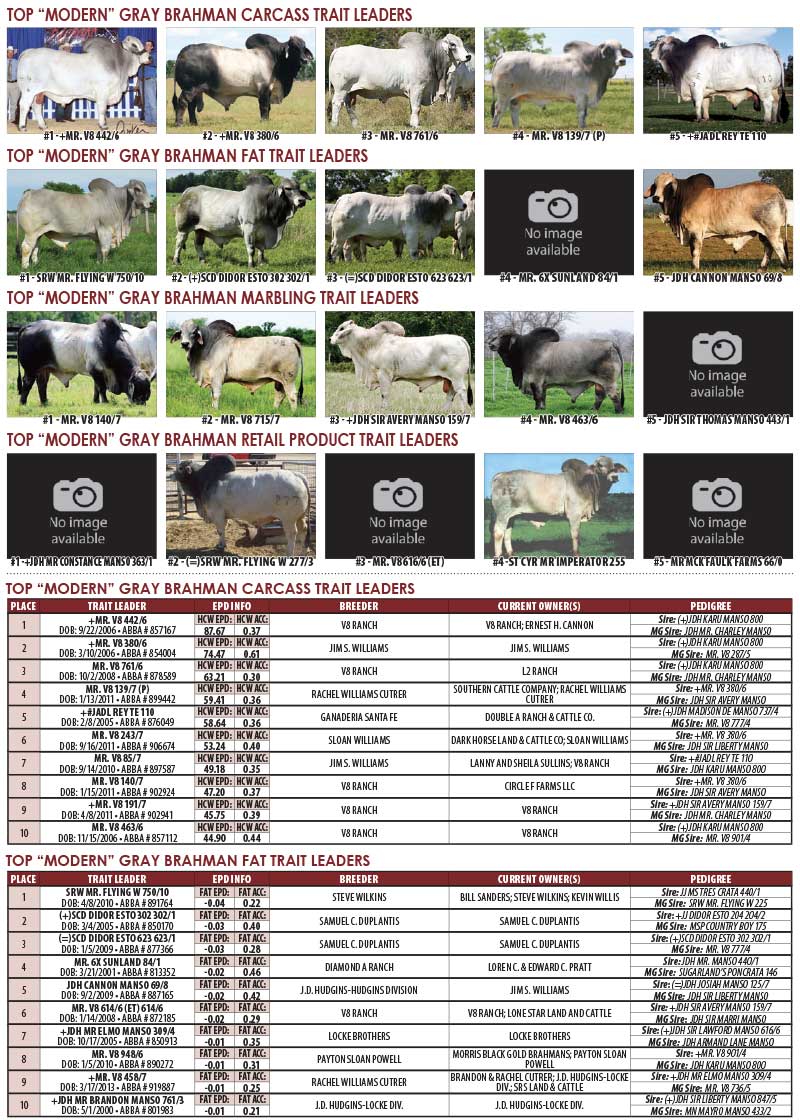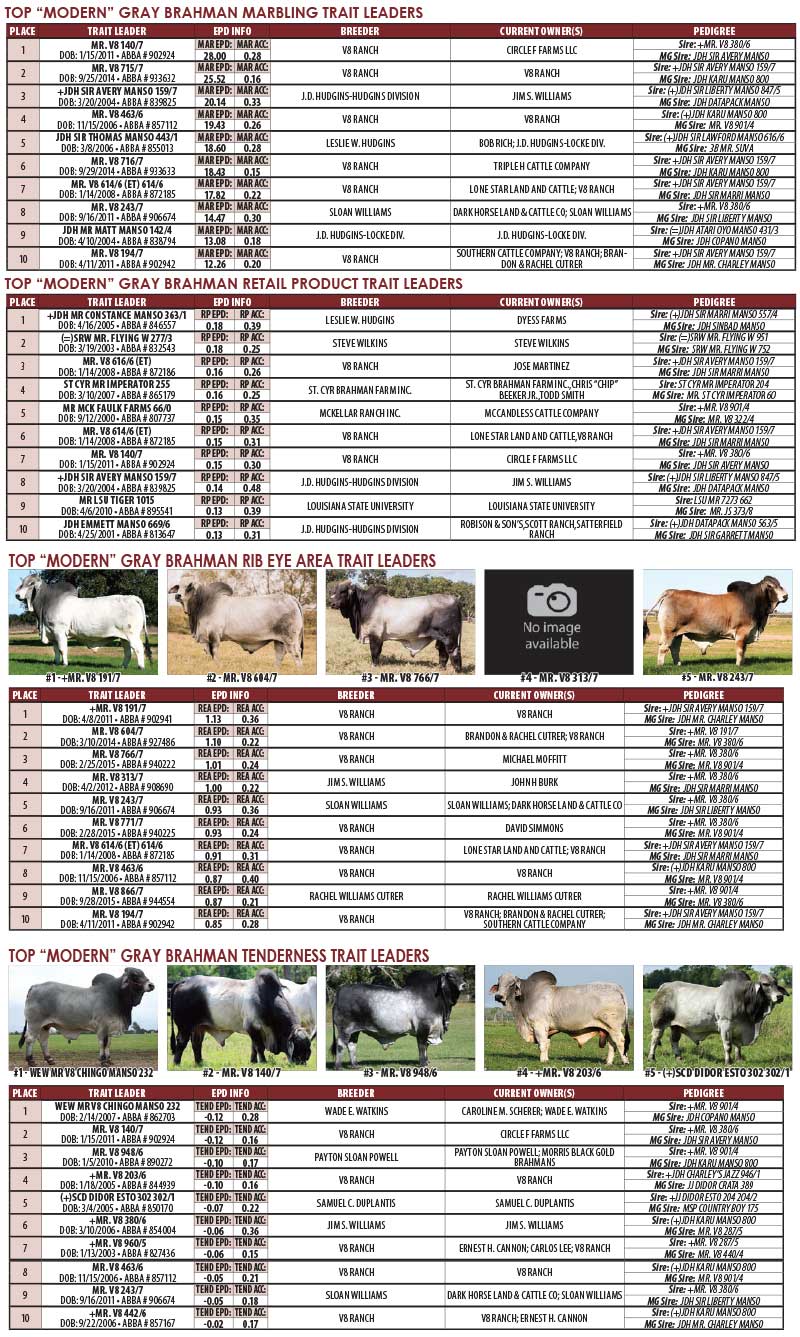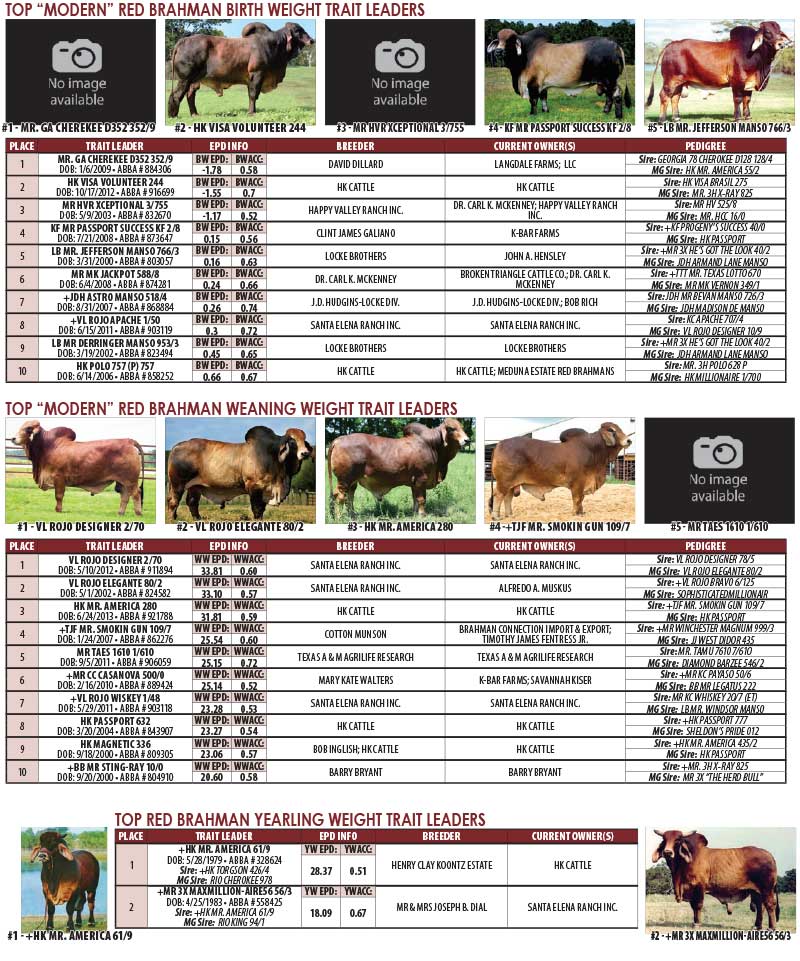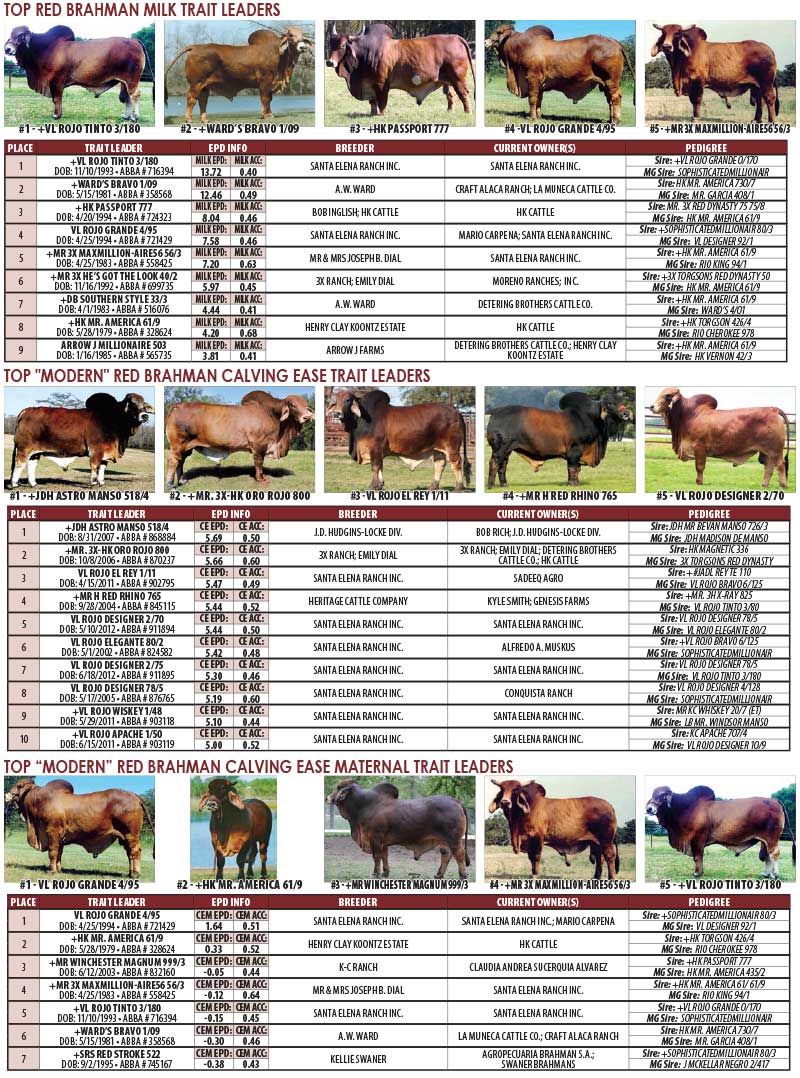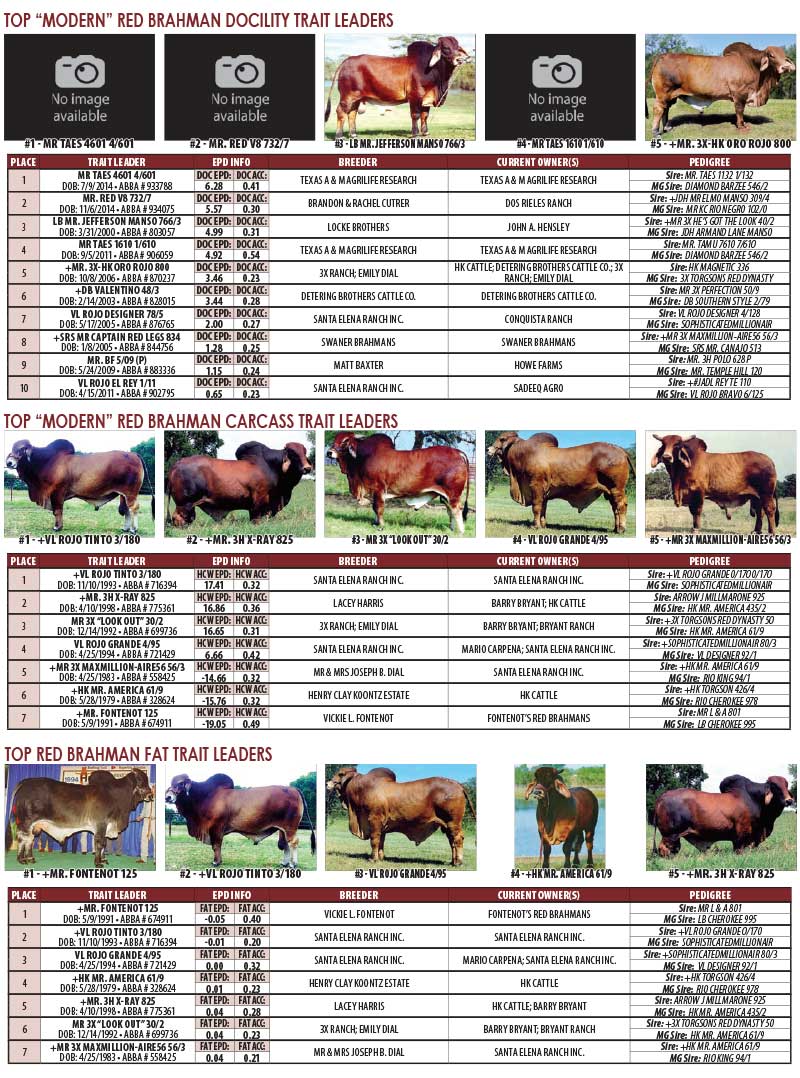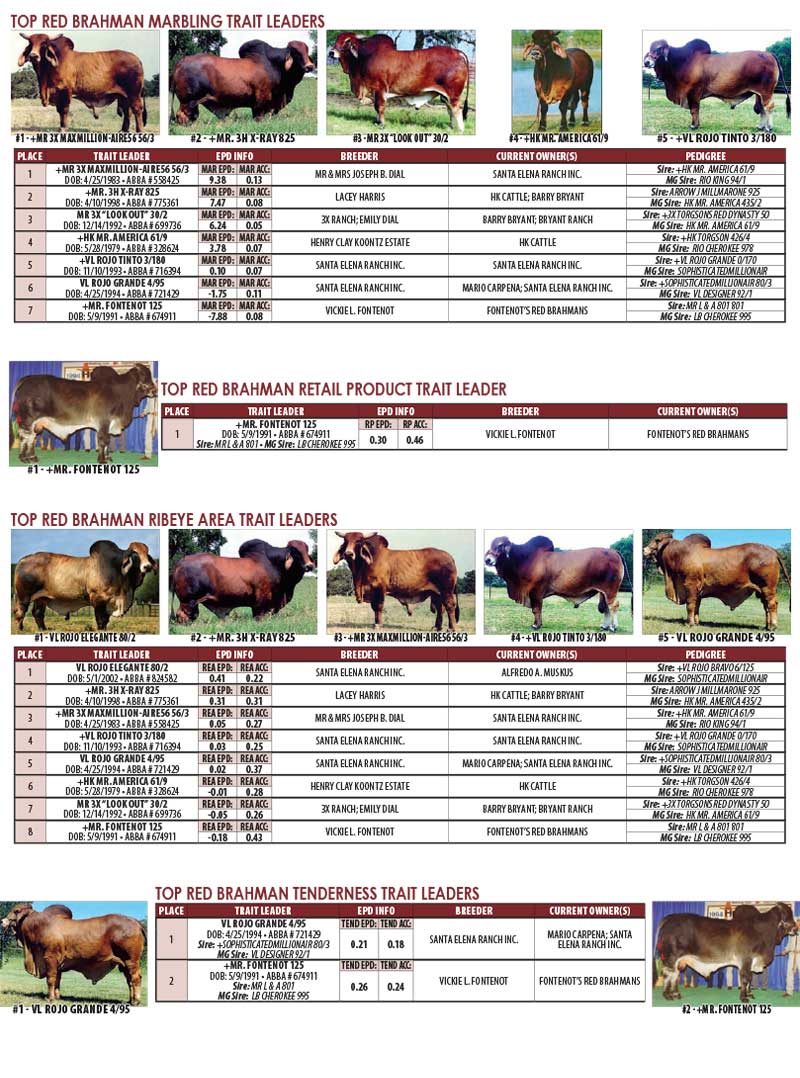The trait leader information has been adapted from information provided to The Brahman Journal by the ABBA. For the first time ever we will report the gray Brahman and red Brahman trait leaders separately. Where applicable we will report “modern” trait leaders. We considered bulls born after January 1, 2000 as “modern” bulls. There are some traits that are newer and therefore may not have as many leaders to report. If you would like an official printed sire summary contact the ABBA office. We are running this feature as a service to our readers and are not responsible for any inaccuracies in the data.
ACCURACY
Accuracy for an EPD may range from 0.0 to 1.0. As the accuracy approaches 1.0, the EPD is more reliable and changes less in the future as more data is accumulated. Accuracy can be rated as follows: LOW – 0.0 to 0.39; MEDIUM – 0.4 to 0.64; and HIGH – 0.65 to 1.0.
CONTEMPORARY GROUPS
The effects of contemporary groups are adjusted for in the analysis procedure. This results in the EPDs being computed as though all animals were in one large contemporary group. This is the reason the EPDs can be compared across herds. The proper identification of the contemporary in which an animal is raised is of utmost importance for an accurate evaluation of the animal and its parents. Breeders should be aware of the definition of a contemporary group: 1) Animals of the same sex. 2) Animals of similar age (try to keep animals within 180-day birth date spread) and 3) Animals managed together and given equal opportunity to perform (re. same pasture, same feed, same weigh dates, etc.). Producers need to send the ABBA complete information on the management of their cattle so that contemporary groups can be properly assigned. Most inaccuracies in EPDs have been linked to misidentification of contemporary groups.
ABBA TRAIT LEADERS
For a bull to be recognized as a Trait Leader he must have met the specific requirements set forth by the American Brahman Breeders Association. First, only bulls that have the designated accuracy for the specific trait are considered. Once the sire has met the accuracy requirement he must be within the top 20 of the breed in the respective trait and have had at least one progeny registered within the previous two years.
This process is many times misinterpreted as simply listing the top 20 bulls for a trait; however, only proven bulls can be considered as Trait Leaders. When using EPDs as tools to help in the sire selection process it is important to remember to select a balanced bull with acceptable ranges for all traits rather than selecting a bull for one desired trait as this can yield a less than optimum outcome.
For this report we used the list of trait leaders that the ABBA provided, then sorted for gray bulls that were born after January 1, 2000 to reach a “modern” list of gray bulls in the order of their ranking. For the red bulls we used only bulls that are classified as red by the ABBA and list them here in the order of their ranking.
NEW TRAITS
The Calving Ease and Calving Ease Maternal EPDs were both added to the ABBA lineup of EPDs recently. Both EPDs are calculated using reported calving ease scores as well birth weight data. The Calving Ease EPD is designed to reflect the probability that the animal will be able to be born without assistance. The higher the number is the less likely the animal will need human intervention to assist with its birth. This trait focuses directly on the growth aspects of that individual animal as a calf in utero.
The Calving Ease Maternal EPD focuses on the potential of that animal as a parent. It looks at a dam’s ability to give birth unassisted, or if it is a bull, the EPD is a prediction of his ability to sire females that will be able to have calves unassisted. Again, the higher number is preferred.





